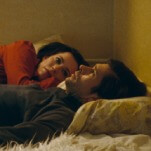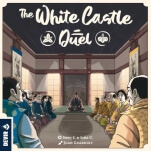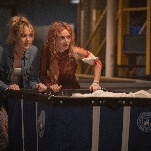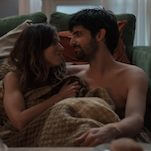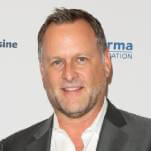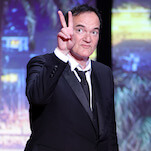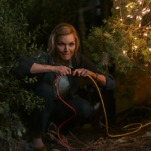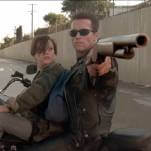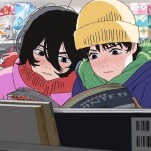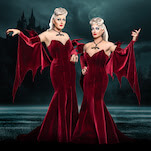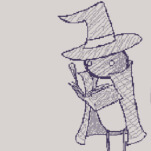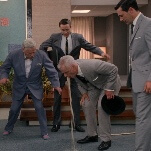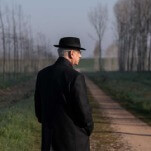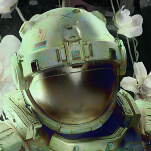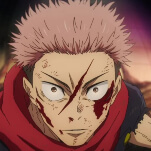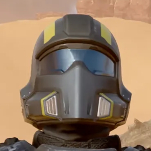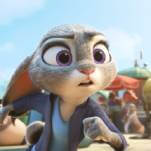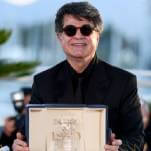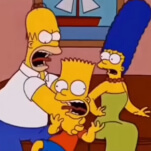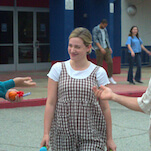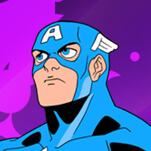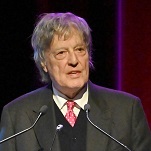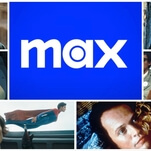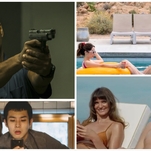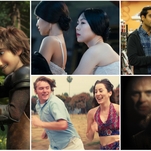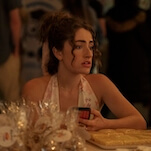The Russo brothers put Captain America in a cage match, breaking free of Marvel's rote battle plan
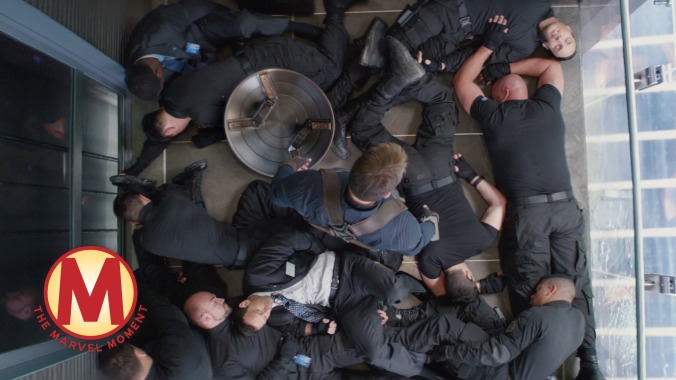

As Marvel’s house style has come together, the two most frequently discussed elements have been its humor and action (especially the third-act titanic throwdowns). But these two aspects have rarely been equal in their development—the humor has evolved at a greater pace and with greater consistency than the action. Hell, comedy not only rescued the Thor franchise, it offset the clunkiness of Ragnarok’s final fight, an all-too-common convoluted swirl of fists and CGI.
Despite having launched with propulsion jets, the actual heroics of the Marvel Cinematic Universe have rarely ever soared as high as they did in The Avengers’ splashy climax. Whether traveling to strange new worlds or just over to Queens, most MCU fights go down in the same way: They’re loud, hard to follow, with often uninspiring special effects. This inability to combine clarity with a grand scale is made even more glaring in Avengers: Infinity War, which takes us through the paces at least a half-dozen times.
Clearly, bigger isn’t always better, a lesson that the MCU seemed to have actually learned in Captain America: The Winter Soldier. When Kevin Feige tapped Anthony and Joe Russo to direct the follow-up to The First Avenger, it wasn’t immediately clear what the Arrested Development and Community alums would bring to the house style. Ultimately, the brothers, who’d deployed a kind of guerrilla filmmaking while working on those two popular TV comedies, were freed of the some of the usual constraints. Marvel Studios had already determined The Winter Soldier would be in the style of a ’70s political thriller like Three Days Of The Condor and The Parallax View, which put it far and away from any of the preceding MCU films, including The First Avenger.
The Russo brothers ran with the idea, using an eclectic, enervating score from Henry Jackman to ratchet up the paranoia of Steve Rogers (Chris Evans), while bringing Robert Redford on to disillusion everyone from Captain America to Nick Fury (Samuel L. Jackson) as the cynical politician Alexander Pierce. The Winter Soldier continues Captain America’s progression, from potential jingoist square to beacon of hope to clear-eyed man without a country (or at least, a mission). Just as important, with no repulsers, mythical hammers, or evil robots to get in the way, the film offers the first big break from by-the-numbers CGI beatdowns. Though the approach is more “ground and pound” than it is high-flying, the fight choreography in The Winter Soldier is more exciting and graceful than anything that came before it, and most of what’s come since.
It all starts with body language, from Steve’s brashness on the plane to the Lemurian Star, where he shows off some truly impressive hand-to-hand combat skills, thereby filling us in on what he’s gotten up to since saving New York. Like another Marvel captain, he revels in his physicality and competence as he takes down the hijackers. Steve’s right back to principled soldier in Winter Soldier’s first elevator ride, his jaw sagging slightly at the sight of the Project Insight carriers. When he argues with Nick about whether the program is preserving freedom or instilling fear, he’s resumed the stance from his old WWII posters—shoulders broad, hands at his belt. This all changes again after the attack on Fury, as well as Steve’s first run-in with the eponymous Soviet operative, who also happens to be his best friend, Bucky Barnes (Sebastian Stan).
When Cap enters the elevator a second time, his worldview is about to be rocked even further. Steve’s training, combined with his growing mistrust, make for the most electric fight in MCU history. As members of STRIKE, both plain-clothes and in full gear, board the elevator, Cap notices the beads of sweat on one man’s brow, and the hand of another hovering over his sidearm. They’re right to be nervous—what follows is a cage match that proves just how well Cap has adapted to the times.
Everything about the sequence is exhilarating and satisfying, from the bone-crunching blows to aerodynamic feats you wouldn’t think possible in such a tight space. The Russo brothers’ use of handheld cameras makes sense of the melee—keeping the unconscious agents in frame has a certain grim humor, as we see the bodies piling up, but their various sizes and guises also reflect how deep the infiltration goes. Steve has no way of knowing who’s on his side, a point that’s further driven home when he finds out his best friend is an international assassin and that his attempts to bring meaning to his life after losing everyone were in vain.
Along with the nimble direction, Evans’ performance sells us on just how significant this last straw is. It’s hard to believe that the elevator fight was the first scene Evans shot for The Winter Soldier, but he was just waiting to unleash the frustration and disillusionment. As he’s surrounded by enemies, Steve’s face registers growing suspicion, some shock, and finally, acceptance of a new mission. If Tony Stark’s shown the greatest progression as a character, Evans has clearly demonstrated the most growth as an actor, helping the MCU hit a new, if short-lived, high.
GET A.V.CLUB RIGHT IN YOUR INBOX
Pop culture obsessives writing for the pop culture obsessed.

